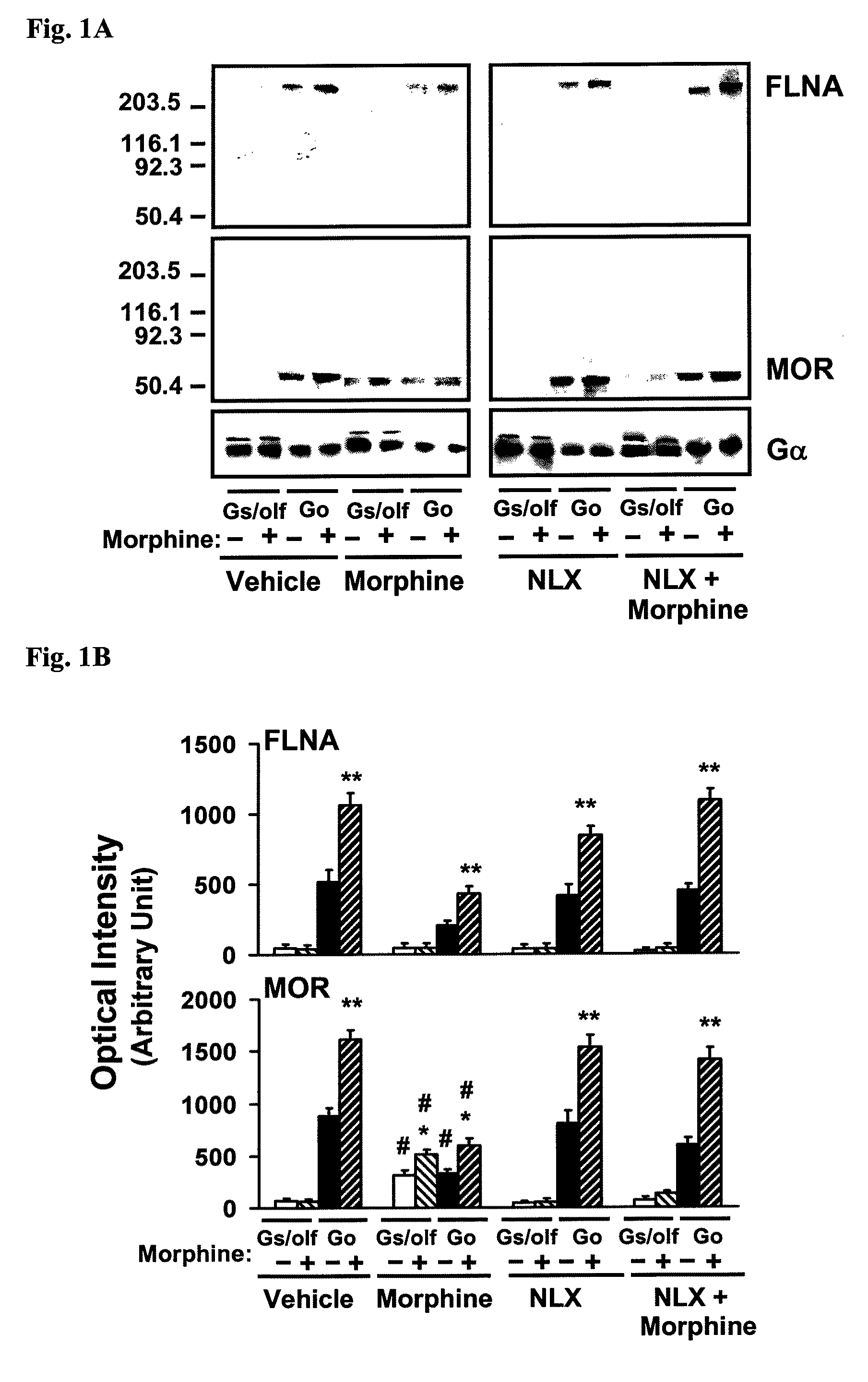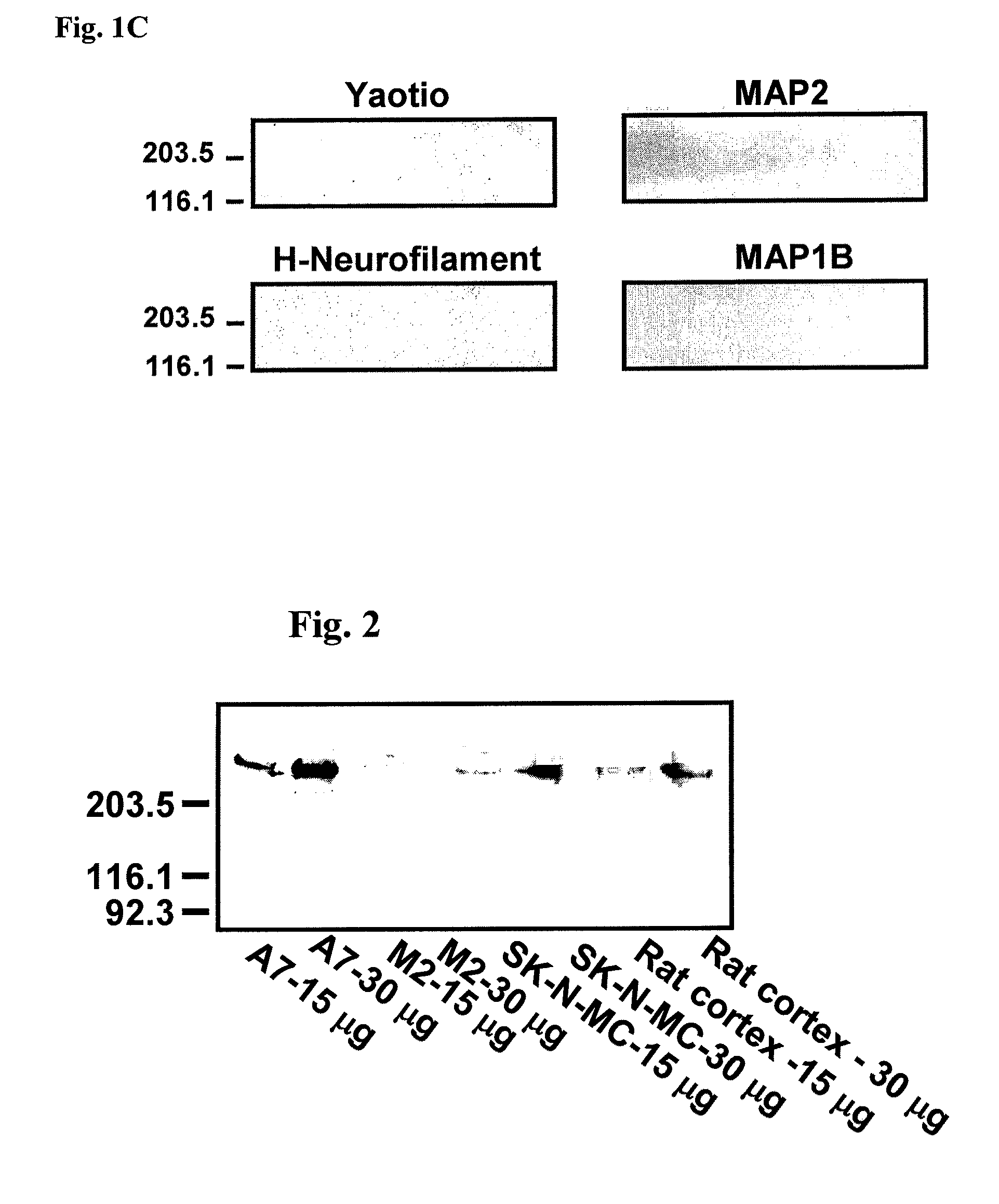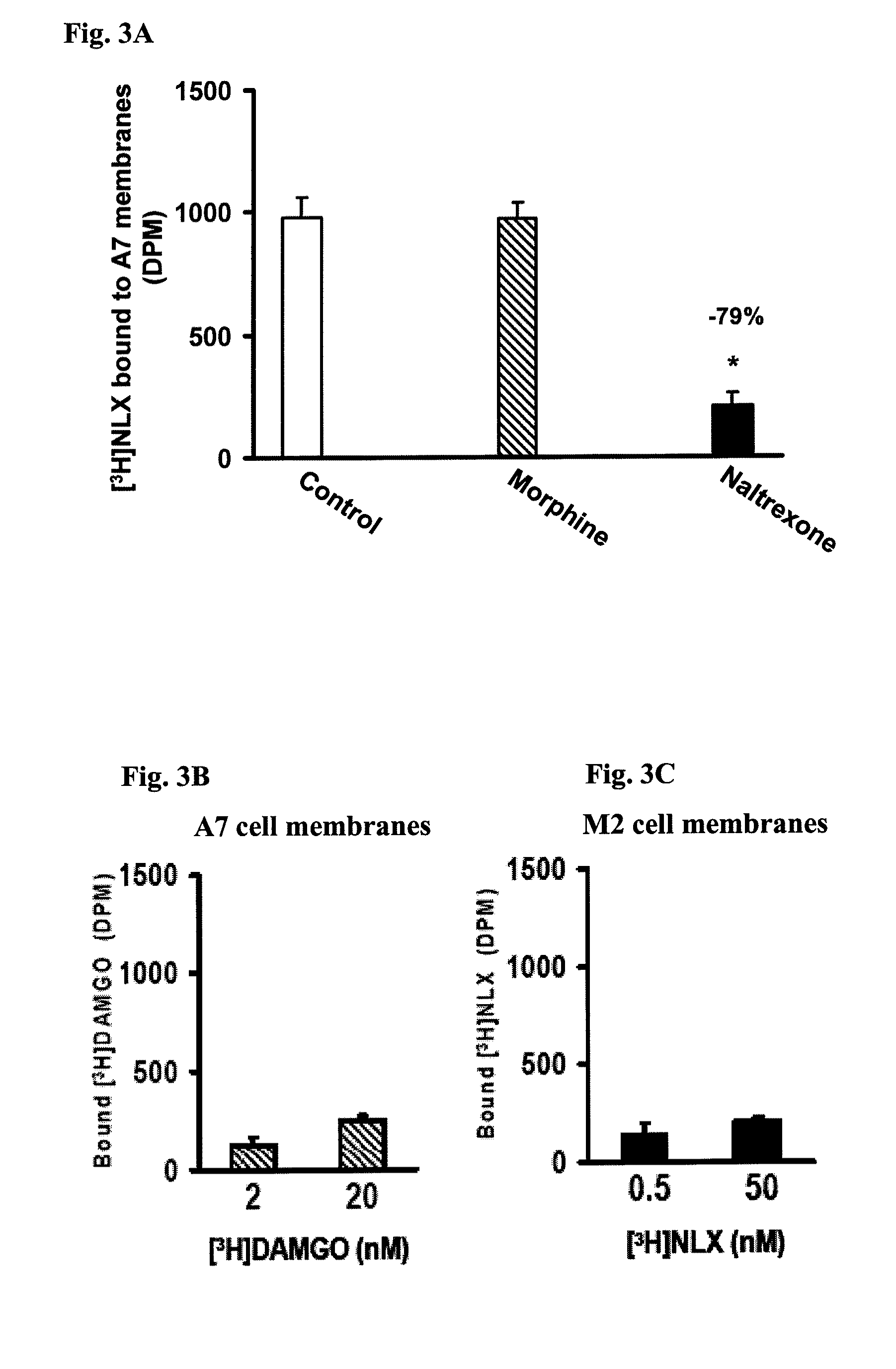Analgesia with minimal tolerance and dependence by a mu opioid receptor agonist that also binds filamin a
- Summary
- Abstract
- Description
- Claims
- Application Information
AI Technical Summary
Benefits of technology
Problems solved by technology
Method used
Image
Examples
example 1
[0189]For identification of NLX-binding protein in MOR immunoprecipitates, four groups of 4 rats were treated twice daily for 7 days with vehicle, NLX (10 ng / kg, s.c.), morphine (10 mg / kg, s.c.), or morphine+NLX. For organotypic brain slice cultures, striata were removed on ice and treated in vitro as described below. All procedures carried out in these protocols are in compliance with the City College of New York IACUC on the use and care of animals.
[0190]To identify the NLX-binding protein in MOR immunoprecipitates, MOR and its associated scaffolding proteins and G proteins were immunopurified together using anti-Gαs / olf or -Gαo antibodies that were immobilized to prevent interference from immunoglobulins. Anti-Gα antibodies (Santa Cruz Biotechnology, Santa Cruz, Calif.) were covalently cross-linked to protein A conjugated resin in a Seize-X protein A immunoprecipitation kit (Pierce-ENDOGEN, Rockford, Ill.) according to manufacturer's instructions. MOR-G protein-scaffolding protei...
example 2
[0195]To determine the NLX binding site on FLNA, various overlapping peptides encoding the c-terminal section of FLNA were used to compete for [3H]NLX binding to FLNA using either A7 cell membranes or purified FLNA from A7 or SK-N-MC cells. Peptides were prepared by Sigma-Genosys (The Woodlands, Tex.). The reaction mixture consisted of 100 μg A7 membranes or 2 μg purified FLNA, 500 pM [3H]NLX, and 10 μM of either FLNA2550-2560, FLNA2556-2565, FLNA2561-2570, FLNA2566-2575 or FLNA2576-2581 in 500 μl binding medium. The reaction was carried out at 37° C. for 30 minutes and terminated by rapid filtration through GF / B membranes under vacuum. The filters were washed twice with 5 ml ice-cold binding medium, and [3H]NLX retained on the filters was measured by liquid scintillation spectrometry.
example 3
[0196]To determine the essential amino acid residue(s) within the NLX-interacting pentapeptide, four additional pentapeptides, each with one amino acid residue replaced by alanine, were used along with the correct FLNA2561-2565 pentapeptide to compete for [3H]NLX binding to FLNA using 100 μg A7 cell membranes. Peptides were generated by Sigma-Genosys. The reaction mixture consisted of 500 pM [3H]NLX, 100 μg A7 membranes, and 10 μM pentapeptide [AAKGL, (SEQ ID NO:13); VAKGL (SEQ ID NO:14); VAAGL (SEQ ID NO:12); VAKAL (SEQ ID NO:15) or VAKGA (SEQ ID NO:16)] in 500 μl binding medium. The reaction was conducted at 37° C. for 30 minutes and terminated by rapid filtration through GF / B membranes under reduced pressure. The filters were washed twice with 5 ml ice-cold binding medium, and [3H]NLX retained on the filters was measured by liquid scintillation spectrometry.
PUM
| Property | Measurement | Unit |
|---|---|---|
| Molar density | aaaaa | aaaaa |
| Molar density | aaaaa | aaaaa |
| Molar density | aaaaa | aaaaa |
Abstract
Description
Claims
Application Information
 Login to View More
Login to View More - R&D
- Intellectual Property
- Life Sciences
- Materials
- Tech Scout
- Unparalleled Data Quality
- Higher Quality Content
- 60% Fewer Hallucinations
Browse by: Latest US Patents, China's latest patents, Technical Efficacy Thesaurus, Application Domain, Technology Topic, Popular Technical Reports.
© 2025 PatSnap. All rights reserved.Legal|Privacy policy|Modern Slavery Act Transparency Statement|Sitemap|About US| Contact US: help@patsnap.com



